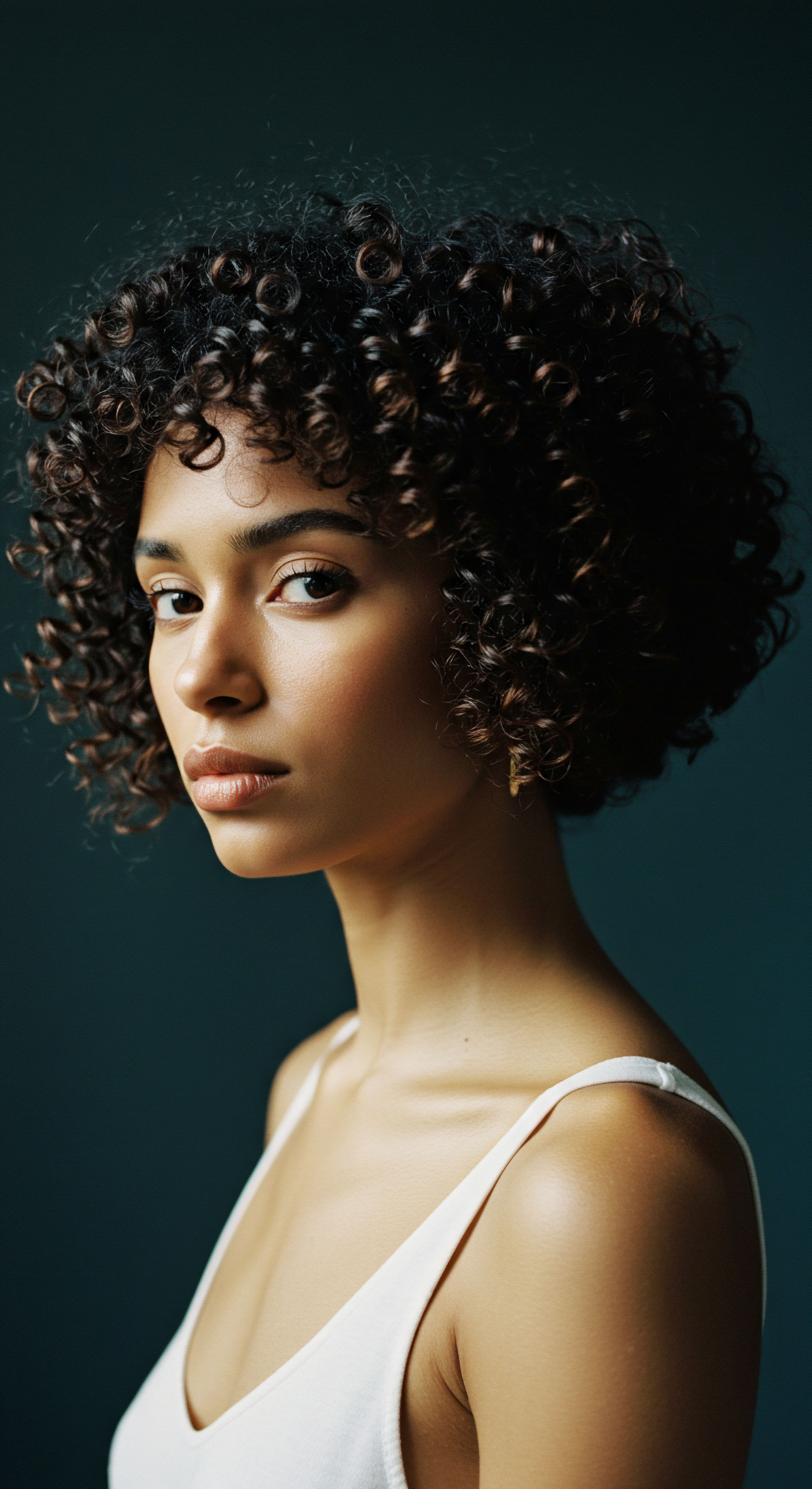
Roots
The whisper of ancient winds across sun-drenched sands carries echoes of practices that shaped lives, even down to the very strands upon one’s head. For those who graced the royal courts of ancient Egypt, hair was far more than mere adornment; it was a living symbol, a canvas of identity, status, and connection to the divine. Understanding their daily hair care is not simply a historical curiosity; it is an invitation to witness a society where every detail, every ritual, held profound meaning. It speaks to a deep, abiding respect for self-presentation and a profound understanding of personal well-being that resonates even today.

The Symbolic Weight of Ancient Strands
In the vibrant tapestry of ancient Egyptian existence, hair held immense symbolic weight. It served as a clear marker of an individual’s place within the societal structure, differentiating royalty from commoners, men from women, and even priests from the general populace. Longer hair, often seen on depictions of deities and pharaohs, frequently symbolized power and divine connection.
This reverence for hair extended beyond earthly life, as meticulous attention was given to its preservation for the afterlife, ensuring the deceased carried their earthly splendor into eternity. The care bestowed upon one’s coiffure was a daily reaffirmation of one’s position and spiritual alignment.
Hair in ancient Egypt served as a profound symbol of identity, status, and divine connection, meticulously cared for in life and prepared for eternity.
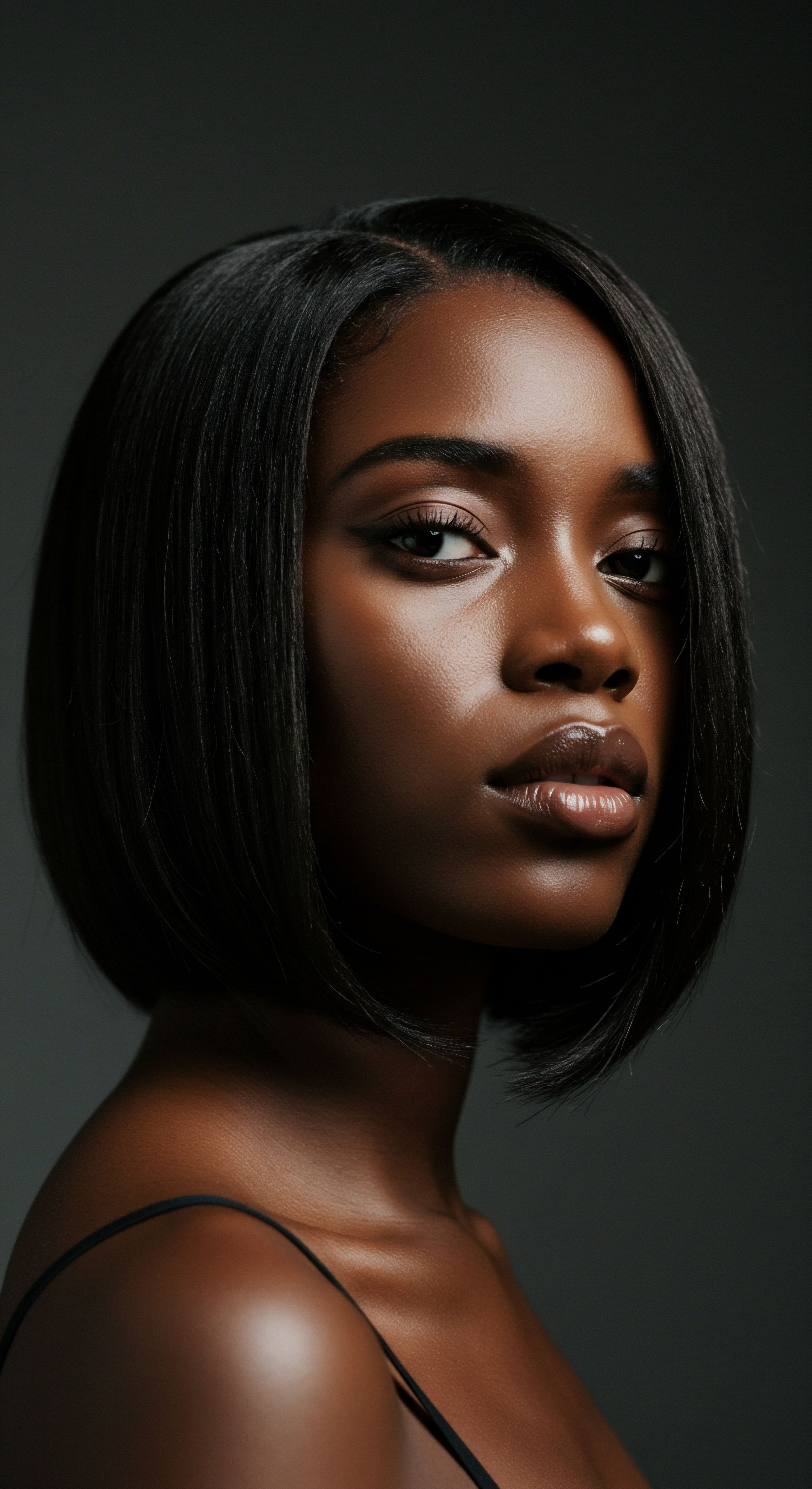
Anatomy of Adornment Ancient Egyptian Hair
The actual hair of ancient Egyptians varied, much like people today. Archaeological findings reveal a spectrum of natural hair textures, from straight to tightly coiled. However, the prevailing aesthetic, particularly for the elite, often favored sleekness, volume, and intricate styling.
This aspiration led to the widespread adoption of wigs and hair extensions, which offered both stylistic versatility and practical benefits. These crafted pieces allowed for dramatic changes in appearance, offering a shield from the harsh sun and a deterrent against parasitic concerns, such as lice, which were a constant worry in the warm climate.
- Wigs ❉ These elaborate headpieces were crafted from human hair, animal hair, linen fibers, or sheep’s wool. The finest and most costly versions were made entirely of human hair, a commodity so precious it was valued similarly to gold.
- Extensions ❉ Braids of human hair or plant fibers were often attached to natural hair to create greater length and fullness. These predate full wigs, with examples found from as early as 3400 BCE.
- Natural Hair ❉ While wigs were prevalent, many Egyptians, including some royalty, maintained their natural hair, often keeping it short or styled with braids and coils, then augmenting it with extensions or elaborate ornaments.

The Essential Toolkit of Ancient Hair Care
The pursuit of perfectly styled hair required a specialized collection of tools, many of which bear a striking resemblance to implements found in modern beauty routines. These items, often beautifully crafted, were integral to the daily regimen of the elite. Combs, for instance, were among the oldest hair accessories discovered, with examples dating back to 3900 BCE. They were fashioned from materials such as ivory, bone, and wood, frequently adorned with animal motifs or precious stones, signifying their owner’s wealth and social standing.
Beyond combs, a range of other instruments assisted in grooming. Tweezers, often combined with razors, were essential for the widespread practice of hair removal, a sign of cleanliness and social distinction. Razors themselves evolved from simple stone blades to more refined copper and bronze versions.
Hair curlers, too, have been found in archaeological contexts, suggesting a desire for specific textures and styles. The existence of these tools, some quite sophisticated for their time, underscores the deep commitment to personal grooming that permeated ancient Egyptian society, particularly among the upper echelons.
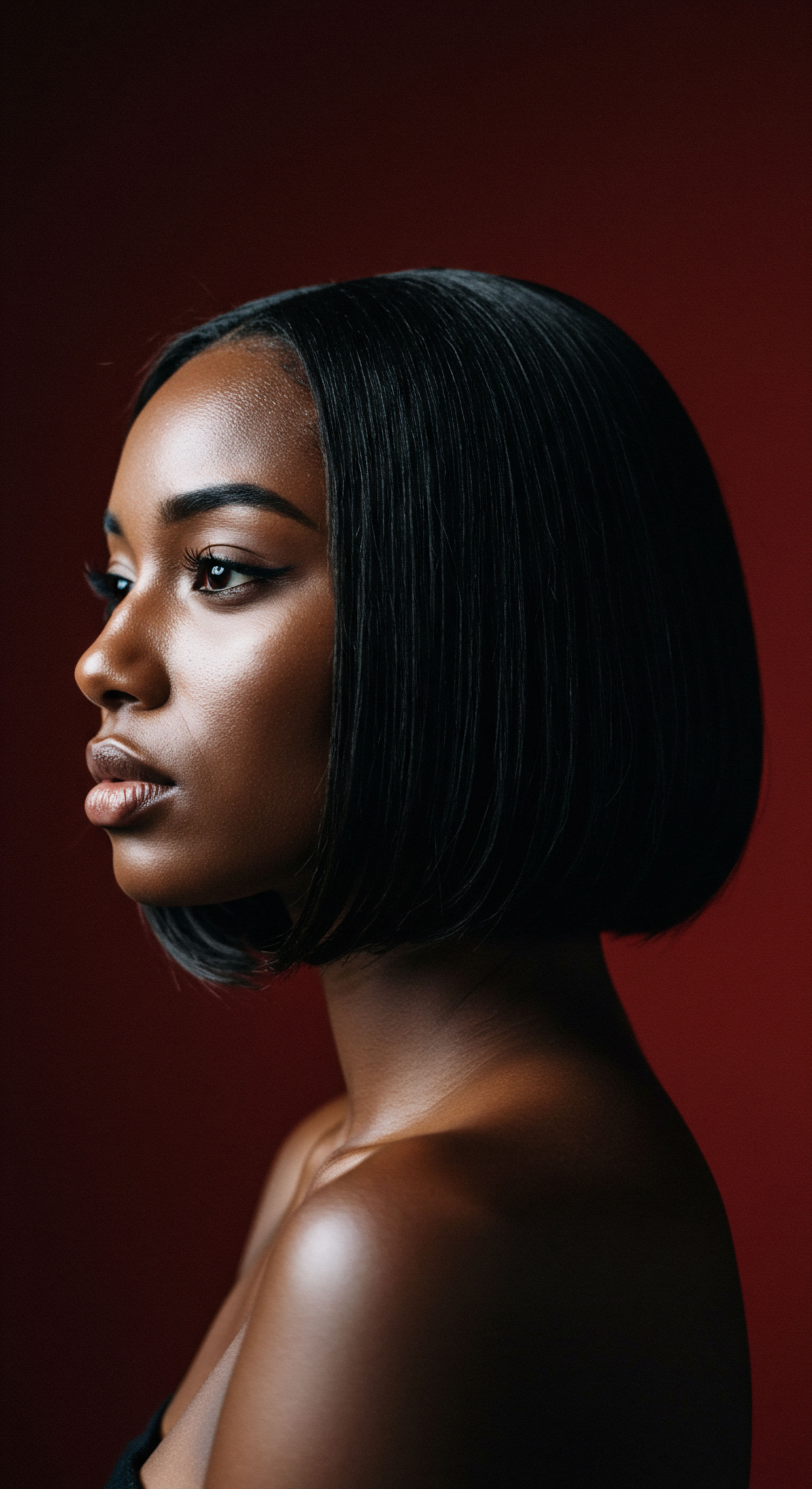
Ritual
To consider the daily hair routine of ancient Egyptian royalty is to step into a realm where every gesture, every application, was imbued with purpose and careful consideration. It was a practice that moved beyond simple hygiene, ascending to a thoughtful daily ritual, a quiet affirmation of status and a gentle preparation for the public eye. Imagine the cool touch of carefully prepared balms, the smooth glide of a finely carved comb, each moment a deliberate act of self-care. This section explores the tangible practices, the ingredients, and the skilled hands that shaped the royal coiffure, offering a glimpse into a world where personal presentation was a profound art.

Morning Preparations and Wig Application
The day for ancient Egyptian royalty would often begin with a series of ablutions and preparations, among which hair care held a prominent position. While some royals might have maintained their natural hair, many opted for elaborate wigs. These wigs were not merely worn; they were integrated into a daily presentation. For those with shaved or closely cropped natural hair, the wig provided immediate volume and style.
For others, it was placed over their natural hair, offering protection and an additional layer of style. The application of a wig was likely a meticulous process, perhaps aided by attendants. These headpieces were often quite substantial, some even helmet-shaped, and could be adorned with precious gems or metals, requiring careful placement to ensure stability and comfort.
The process of securing these elaborate wigs or styling natural hair involved specific preparations. Analysis of mummy hair has revealed the widespread use of a fat-based “gel” to hold styles in place. This substance, identified through gas chromatography-mass spectrometry, contained biological long-chain fatty acids like palmitic and stearic acid.
This “gel” was applied to both natural hair and wigs, serving as a styling agent in life and a preservative in death. The discovery of this fatty coating on mummies, regardless of whether they were artificially preserved or naturally desiccated, suggests its use was a routine beauty practice rather than solely a mummification technique.
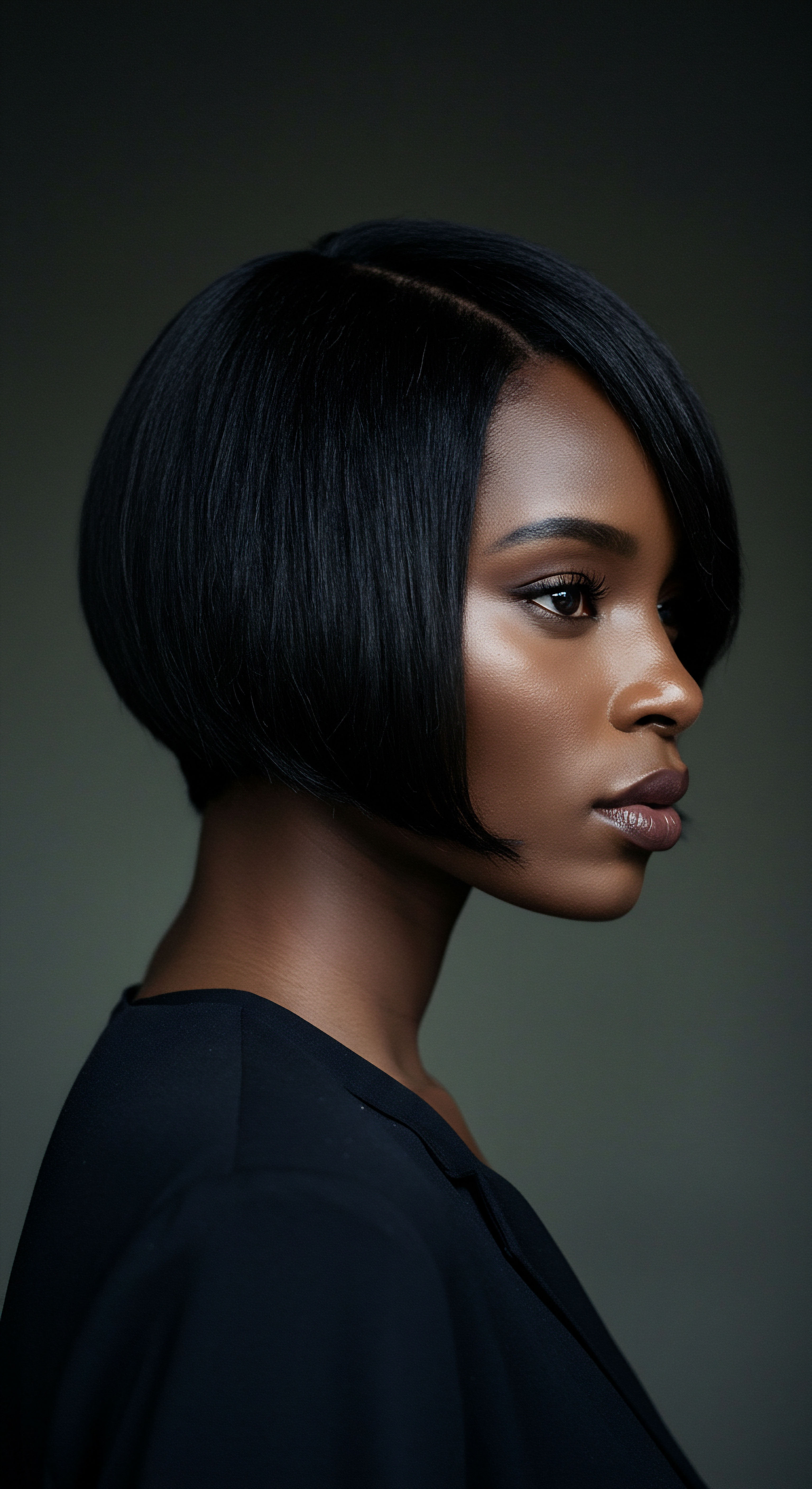
What Did They Use To Cleanse and Condition Hair?
Maintaining scalp and hair cleanliness was a priority, despite the challenges of the arid environment. While the exact frequency of hair washing remains uncertain, evidence of cleaning practices exists. Ancient Egyptians were aware of cleansing agents, having discovered how to create a form of soap from alkali salts found in places like the Wadi El Natron, mixed with oils.
This suggests a rudimentary understanding of saponification. For hair, however, the focus appears to have been more on conditioning and scenting, rather than harsh cleansing.
Oils played a central role in conditioning. Almond oil, castor oil, fir oil, and rosemary oil were among the favored choices. These oils served multiple purposes:
- Shine and Softness ❉ The application of these oils would have imparted a healthy sheen and softened the hair fibers, whether natural or part of a wig.
- Scenting ❉ Fragrant oils and balms were used to perfume the hair, contributing to the overall sensory experience of royal presence.
- Pest Control ❉ Some oils may have offered a degree of protection against lice, a common issue in ancient times.
The Ebers Papyrus, a medical text dating to 1550 BCE, details various remedies and beauty treatments, including those for hair. It speaks to a systematic approach to hair health, incorporating natural components readily available in their environment.

Styling and Adornment Techniques
Royal hairstyles, whether natural or wig-based, were elaborate and varied across different periods of ancient Egyptian history. During the New Kingdom, particularly intricate styles incorporating curls and plaits gained favor. Wigmakers and hairdressers, highly skilled professionals, meticulously crafted these looks.
They used techniques like braiding hundreds of small plaits for wigs and artificially curling hair, possibly with heated metal implements resembling curling tongs. Beeswax and resin were applied to set these complex styles, ensuring they remained fixed, even through daily activities and the heat of the Egyptian climate.
Adornments were an indispensable part of the royal coiffure. Gold wig rings, beads, and inlaid gold rosettes were often incorporated into wigs and hair extensions, adding opulence and further signifying status. Headbands and hairpins, crafted from ivory or metal, also played a role in securing styles and adding decorative flair.
The use of henna was common for dyeing hair a reddish tint or covering gray strands, a practice that dates back to 3400 BCE and continues to be used today. The combination of skilled artistry, natural products, and precious materials transformed hair care into a daily spectacle of royal presentation.

Relay
How did the meticulous hair practices of ancient Egyptian royalty resonate beyond the realm of mere appearance, reaching into the very foundations of their societal structure and their understanding of existence? To fully appreciate the daily hair routine of a pharaoh or queen, we must consider the deeper currents of belief, social hierarchy, and even the scientific understanding of their era. This section invites us to look beyond the surface, to connect the tangible acts of grooming with the profound cultural and biological insights that shaped their world. We will explore how hair functioned as a silent language of power and purity, and how modern analysis continues to shed light on these ancient customs.

Hair as a Marker of Status and Purity
In ancient Egypt, hair was a potent visual code, communicating an individual’s standing and role within the strict social order. For royalty and the elite, elaborate hairstyles and luxurious wigs were unmistakable signals of wealth and authority. The sheer cost and time involved in creating and maintaining these complex hair arrangements meant they were largely exclusive to the upper classes.
A wig made entirely of human hair was a significant investment, its value comparable to gold in some periods. This visual distinction helped maintain the societal stratification, with the king’s fashion often setting trends that trickled down, albeit in simplified forms, to his court and, to a lesser degree, the general populace.
Beyond social standing, hair held deep associations with purity, particularly for religious figures. Priests, for instance, often shaved their heads entirely to ensure ritual cleanliness, preventing any potential interference from lice or other impurities during sacred ceremonies. This emphasis on a hairless state for religious purposes underscores a broader cultural value placed on hygiene and a desire for a pristine physical form, a sentiment that extended to royalty, who were considered divine representatives on Earth. The royal false beard, worn by male and even some female pharaohs like Hatshepsut, further illustrates this blend of ritual and status, symbolizing divine kingship and authority.
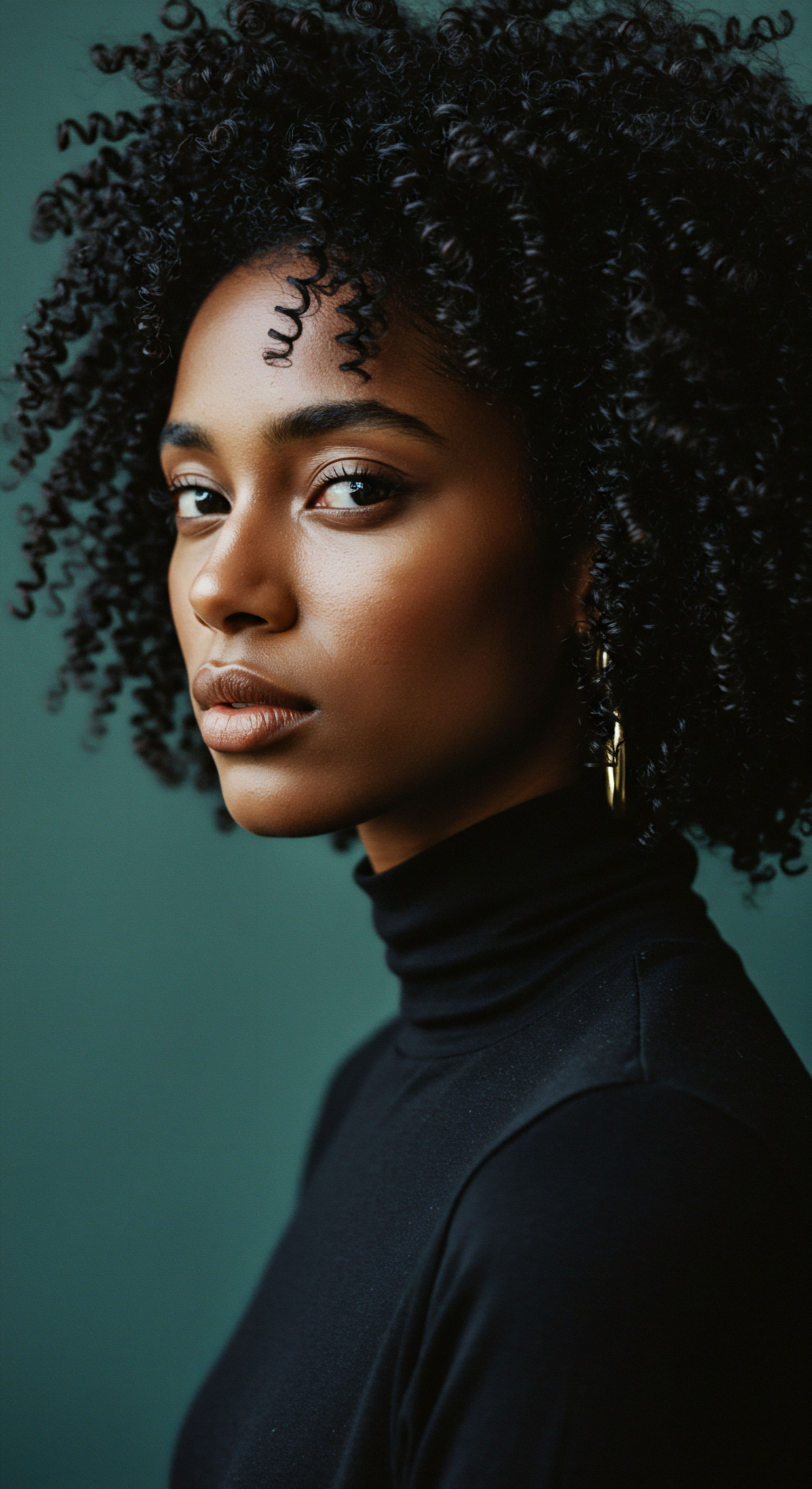
The Scientific Glimpse into Ancient Styling
Modern scientific techniques have offered a window into the actual composition of ancient Egyptian hair products, moving beyond artistic depictions and textual descriptions. One particularly illuminating study involved the chemical analysis of hair samples taken from 18 mummies, some dating back 3,500 years. Natalie McCreesh, an archaeological scientist from the KNH Centre for Biomedical Egyptology at the University of Manchester, and her colleagues, utilized microscopy and gas chromatography–mass spectrometry to examine these samples.
Modern scientific analysis reveals ancient Egyptian hair “gel” contained long-chain fatty acids, underscoring sophisticated cosmetic knowledge.
Their findings revealed that nine of these mummies had hair coated in a fat-like substance, identified as containing biological long-chain fatty acids, specifically palmitic acid and stearic acid. This discovery suggests the widespread use of a styling product akin to a modern hair gel or fixative. Crucially, this fatty coating was found on both artificially mummified bodies and those preserved naturally by the dry desert sand, leading researchers to conclude that it was applied during life as a beauty product, not solely as part of the embalming process.
The careful preservation of hairstyles even in death highlights the profound cultural importance of personal appearance and individuality, believed to carry over into the afterlife. This detailed chemical analysis provides tangible, empirical evidence of the sophistication of ancient Egyptian cosmetic practices, demonstrating a practical understanding of material properties for styling and preservation.
The presence of such fatty acids in ancient hair preparations aligns with other historical accounts of ingredients like animal fats (crocodile, hippopotamus), plant oils (castor, almond), and beeswax used for conditioning and holding styles. The scientific data provides a concrete basis for understanding the efficacy of these ancient formulations, showing that they employed substances with properties suitable for styling and protecting hair.
| Ancient Egyptian Ingredient Animal Fats (Hippopotamus, Crocodile) |
| Observed Chemical Component Palmitic Acid, Stearic Acid |
| Proposed Function Styling, Holding, Conditioning |
| Modern Cosmetic Analogue Hair Gels, Pomades, Deep Conditioners |
| Ancient Egyptian Ingredient Beeswax |
| Observed Chemical Component Fatty Acids, Resins |
| Proposed Function Setting Styles, Shine, Protection |
| Modern Cosmetic Analogue Hair Wax, Styling Balms |
| Ancient Egyptian Ingredient Plant Oils (Castor, Almond, Fir) |
| Observed Chemical Component Various Fatty Acids |
| Proposed Function Moisturizing, Conditioning, Scenting |
| Modern Cosmetic Analogue Hair Oils, Leave-in Conditioners |
| Ancient Egyptian Ingredient Henna |
| Observed Chemical Component Lawsone (Dye Molecule) |
| Proposed Function Hair Dye, Conditioning |
| Modern Cosmetic Analogue Natural Hair Dyes, Henna Treatments |
| Ancient Egyptian Ingredient Resin (Conifer) |
| Observed Chemical Component Terpenoids |
| Proposed Function Fixative, Preservative |
| Modern Cosmetic Analogue Hair Sprays, Styling Resins |
| Ancient Egyptian Ingredient This table illustrates the functional continuity between ancient and modern hair care ingredients. |
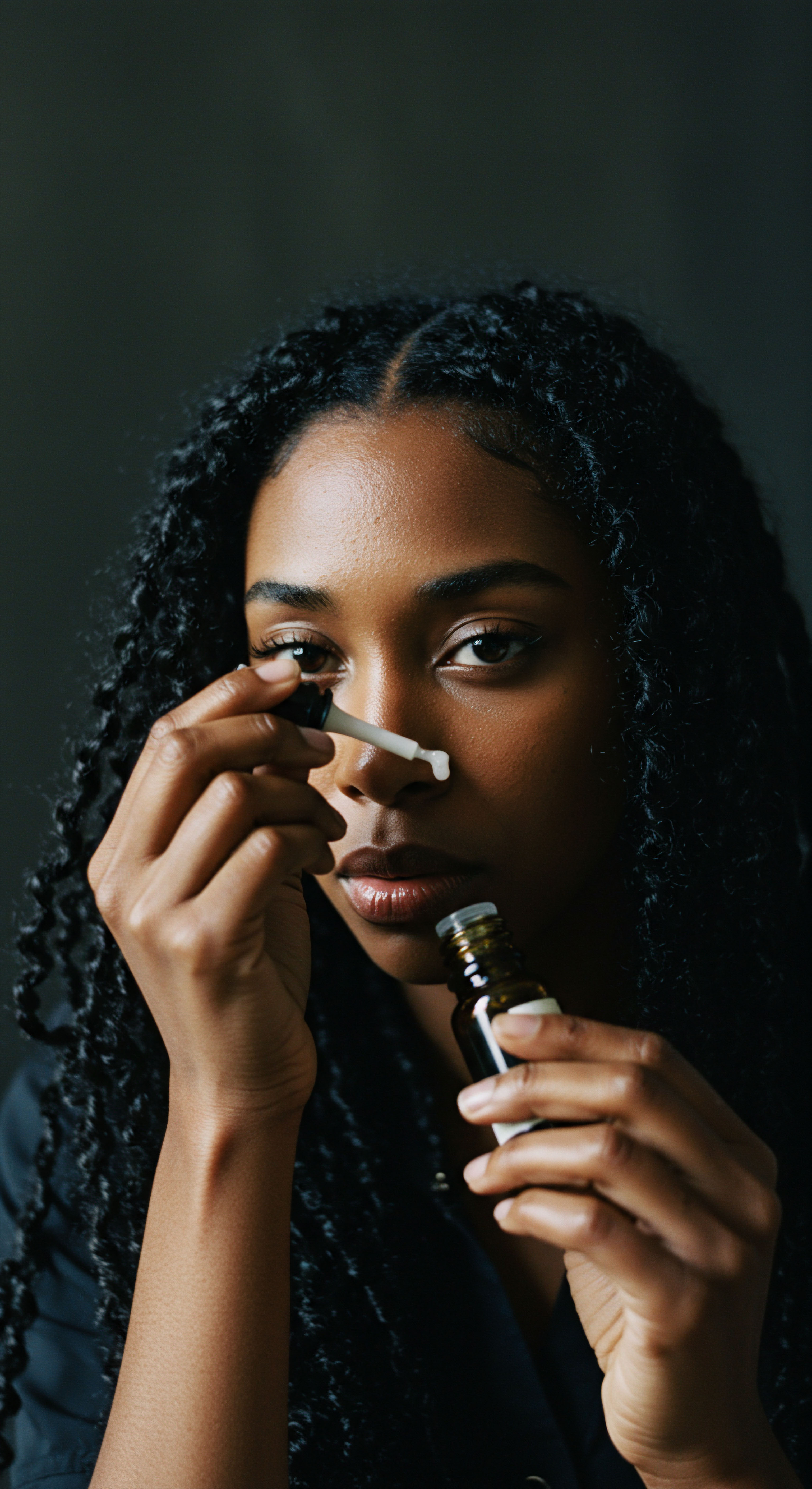
Hairdressers and Barbers ❉ A Specialized Profession
The complex hair routines of ancient Egyptian royalty necessitated a dedicated class of professionals ❉ hairdressers and barbers. These individuals held significant positions, especially within the royal household. Tomb scenes and inscriptions provide evidence of their existence from early dynasties.
Barbers were responsible for shaving the head and body, often using bronze razors, a task particularly important for priests and others maintaining a hairless state. Hairdressers, on the other hand, focused on styling, cutting, and dressing both natural hair and wigs, employing combs, bodkins, and unguents.
The distinction between private and state hairdressers existed, with royal and palace hairdressers serving the highest echelons. One high-ranking palace barber during the reign of Niuserre in Dynasty 6 held numerous titles, including ‘Overseer of the Palace Barbers’. Reliefs, such as one on the sarcophagus of Queen Kawit from the 11th Dynasty, show private hairdressers tending to the queen’s locks, highlighting the intimate and essential nature of their service.
These professionals were not just technicians; they were artisans who contributed to the visual rhetoric of power and beauty, their skills passed down through generations. The sophistication of their craft underscores the deep cultural investment in appearance that defined ancient Egyptian royalty.

Reflection
The daily hair routine of ancient Egyptian royalty, a symphony of natural ingredients, skilled hands, and profound cultural significance, offers a compelling echo from the past. It speaks to a universal human desire for self-expression and care, transcending millennia. The precision with which they approached their hair, whether through elaborate wigs or meticulously groomed natural strands, reveals a society deeply attuned to aesthetics, hygiene, and the subtle language of appearance.
We see not just vanity, but a purposeful connection to identity, status, and the spiritual world. The lingering whispers of their rituals remind us that beauty practices, across all cultures and times, are deeply rooted in who we are and who we aspire to be.

References
- Buckley, S. & Fletcher, J. (2011). An Integrated Study of the Hair Coating of Ancient Egyptian Mummies. Journal of Archaeological Science, 38(12), 3432-3434.
- Fletcher, J. (1995). Ancient Egyptian Hair and Wigs. Ostracon ❉ Journal of the Egyptian Study Society, 13, 2-8.
- Fletcher, J. (1998). Hair, Wigs and Extensions in Ancient Egypt. KMT ❉ A Modern Journal of Ancient Egypt, 9(1), 22-31.
- McCreesh, N. & David, A. R. (2011). Ancient Egyptian Hair Gel ❉ New Insight into Ancient Egyptian Mummification Procedures Through Chemical Analysis. Journal of Archaeological Science, 38(12), 3432-3434.
- Porter, B. & Moss, R. (1927-1995). Topographical Bibliography of Ancient Egyptian Hieroglyphic Texts, Reliefs and Paintings. Oxford ❉ Clarendon Press.
- Riefstahl, E. (1952). Patterned Textiles in Pharaonic Egypt. Brooklyn Museum.
- Speidel, M. P. (1990). Hairdressers, Barbers and Hair-Care in the Roman Empire. Bonner Jahrbücher, 190, 105-116.
- Tassie, G. J. (2014). The Social and Ritual Contextualisation of Ancient Egyptian Hair and Hairstyles from the Protodynastic to the End of the Old Kingdom. UCL Discovery.
- Wagstaff, T. (2023). The Ebers Papyrus ❉ Ancient Egyptian Beauty, Healing, and Wellness Secrets. Independently published.
- Westendorf, W. (1968). Painting, Sculpture and Architecture of Ancient Egypt. New York ❉ Harry N. Abrams.